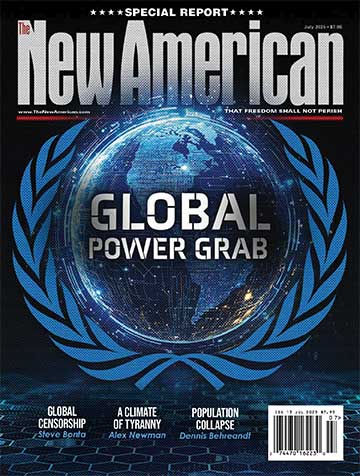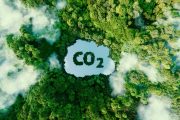
Scientists at the Woods Hole Oceanographic Institution (WHOI) in Massachusetts are planning an experiment in which they will dump approximately 6,000 gallons of sodium hydroxide — a common ingredient in soaps, cleansers, and chemical pipe cleaners — into the waters off of Martha’s Vineyard.
The experiment is a part of WHOI’s LOC-NESS project, which seeks to ascertain whether artificial alkalinity enhancement of the Earth’s oceans can help in global efforts to address so-called global warming, which climate activists claim is leading to out-of-control climate change.
The scientists at WHOI seek to determine if the world’s oceans can be used to remove carbon dioxide from the atmosphere and store it, where it might have less of an effect on the Earth’s climate system.
“Ocean alkalinity enhancement (OAE) leverages a natural process to remove carbon dioxide from the atmosphere by adding an alkaline solution to the sea surface,” says WHOI’s website. “The ocean’s pH (level of acidity/alkalinity) governs its ability to take up the greenhouse gas carbon dioxide from the atmosphere. In fact, the ocean has naturally absorbed as much as one-quarter to one-third of human emissions since the dawn of the Industrial Age.”
The experimental process is not considered a solution to the scourge of climate change but a supplemental strategy, possibly giving the world more time to get off of fossil fuels in favor of energy sources such as wind and solar.
“While emission reductions are key to minimizing human impact on Earth’s climate, it has become clear in recent years that drastic emission reductions must be supplemented by efforts to actively remove existing carbon dioxide from the atmosphere in order to meet internationally accepted targets outlined in the Paris Climate Agreement and reaffirmed at the conclusion of the COP28 UN climate conference in Dubai,” WHOI’s website declares.
WHOI scientist Adam Subhas is set to be the lead investigator on the project, which is slated for August if the permitting process goes as planned. Subhas compared the world’s climate situation to a case of heartburn.
“When you have heartburn, you eat a Tums that dissolves and makes the liquid in your stomach less acidic,” Subhas told The Wall Street Journal. “By analogy, we’re adding this alkaline material to seawater, and it is letting the ocean take up more CO2 without provoking more ocean acidification. Everything that we’re seeing so far is that it is environmentally safe.”
The project has already released 250 gallons of Rhodamine WT, a fluorescent dye, into the same waters off of Martha’s Vineyard last August to see if the treated waters could be reasonably tracked. The next phase of the experiment will see more Rhodamine WT, along with the sodium hydroxide, with a subsequent and larger test tentatively scheduled for the Gulf of Maine in 2025.
The project is funded in part by the National Oceanic and Atmospheric Administration (NOAA) and private sources including the Lockhart Vaughan Foundation and the Carbon-to-Sea Initiative. The Environmental Protection Agency (EPA) still needs to sign off on the project.
“EPA will follow the permitting process as described in the Marine Protection, Research, and Sanctuaries Act regulations before reaching a final determination to approve or deny the permit application,” an EPA spokesperson told the Daily Caller. “Once EPA receives a complete permit application, the agency will provide notice to the public and will invite public comment on the permit application and EPA tentative determination on whether to issue a permit.”
Is all of this even necessary? Does the Earth have the equivalent of heartburn? Some environmentalists call ocean acidification “climate change’s evil twin,” and insist that it’s as big a problem as climate change, or at least it will be.
Not everyone is convinced of that. “The ocean isn’t acidifying, so this experiment will do nothing but possibly disrupt the local ecosystem in the short term with unknown consequences,” Dr. H. Sterling Burnett of the Heartland Institute told The New American.
“A pH of 7 is neutral, with anything below 7 considered acidic. Ocean pH averages 8.1, which is alkaline rather than acidic. Although climate models suggest the oceans’ surface pH may have dropped from pH 8.2 to 8.1 since 1750, that change was never actually measured. The pH drop is merely a modeled conjecture,” Burnett added.
Even though the amount of CO2 in the atmosphere has risen since the Industrial Revolution, the effect on the world’s oceans appears to be negligible, if anything.
“At most the ocean pH had dropped 0.1 pH units; a long way from acidic,” Burnett concluded. “There is no reason for believing oceans will become acidic at the levels various climate models predict.”
The use of geoengineering as a means to address a climate crisis that doesn’t truly exist seems to be a dangerous and unnecessary risk to the planet. Whether it’s adding a key ingredient of lye soap into the oceans or the spraying of reflective aerosol sulfate material into the atmosphere, the unknowns are too great.
The bioethics credo of primum non nocere — first, do no harm — would appear to fit this situation well.





